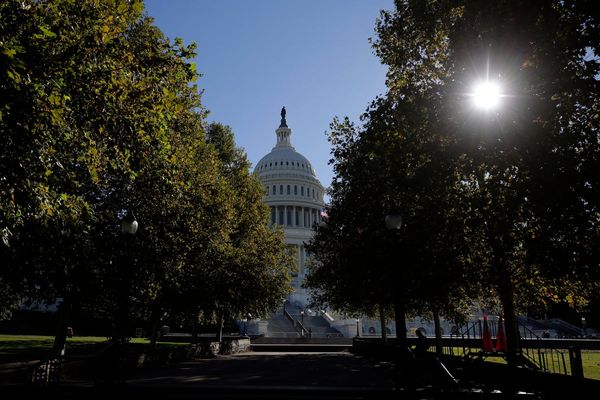
In her assured and perceptive first book essayist and critic Catherine Taylor reminds us that hers is “a typical family and an ordinary story, although neither the story or the family seems commonplace when it is your family and your story” and strikes at the heart of what autobiography does.
Though Taylor was born in New Zealand, her life is moulded by South Yorkshire after she moves there as a child. Upon arrival, “Sheffield was grey, grim and wet” but the Tinsley cooling towers rising into view from the M1 soon become “a welcome sign of home”. The Stirrings takes its title from the local nickname given to the Sheffield Outrages of the 1860s; a series of explosions and murders by trade union militants from the metal trades, an extreme, violent response to poor wages and the lack of protection for workers using new machinery. Despite being immortalised in a play by local writer Allen Cullen, the outrages are not particularly well known on a national level and perhaps it is surprising they do not get more coverage here either. But by referring to them, Taylor establishes Sheffield as a city with a reputation for direct action and implies that this has shaped the character of its residents, including herself. Her writing often examines what it means to be (rightly) outraged, the line between fear (or being “frit”) and rebellion.
The book opens with Taylor at 13 (“a glittering, dangerous age”) and against the backdrop of 1980s industrial unrest and the menacing presence of the Yorkshire Ripper: after committing 13 murders and attempting seven more, Peter Sutcliffe was finally arrested in Broomhill, Sheffield in 1981. He was captured on the road just behind Taylor’s school. Unsurprisingly, the years leading up to that felt freighted with danger and confusion for a Yorkshire schoolgirl. Looking back, she brilliantly evokes the “tiny traumas” of childhood: “In the playground the boys ‘encouraged’ us girls to show them our knickers by chasing us and prickling our cold bare legs all over with holly leaves.”
We are invited to draw a line from this schoolyard sexism to the misogyny shown in early police responses to the Yorkshire Ripper when they thought he was “only” targeting sex workers, rather than “innocents”. Taylor was coming of age in a culture in which it was acceptable for senior detective Jim Hobson to say at a press conference about the Ripper in 1978: “[He] has made it clear that he hates prostitutes. Many people do.” The message that she received from police and the media was that violence against women was routine and that responsibility lay with victims to protect themselves. While playing truant from school, Taylor heads off to the Peak District – a quiet act of resistance at a time when curfews were being imposed and girls were expected to stay indoors. This environment politicised her: resilience replaced fear. Later, sneaking off to Greenham Common to take part in the protests against nuclear weapons, she is struck by “the sense of optimism … and creativity”, by the power of collective defiance. But her political engagement puts her at odds with her peers at independent Sheffield Girls’ school. “Almost everyone at school … supported Mrs Thatcher and believed emphatically in the nuclear deterrent. Greenham and the camp were dismissed as irrelevant. In the eyes of my classmates and their parents I came from a hotbed of leftwing activists, evidenced by the fact that my mother was a member of the local Labour party.”
She is a class anomaly – her mother runs a bookshop and they often struggle to pay the school fees. And she is the only student in her year with divorced parents. The Stirrings also sensitively charts the impact of her parents’ separation and her strained relationship with her distant father, starting from a time when “the hourglass of our family had a few grains of sand left in it” and culminating in Taylor telling her father she can’t see him regularly any more: “our fortnightly meetings, a form of verbal arm-to-arm combat with me very much on the losing side, made me ill with anxiety”.
Social, political and familial unrest are felt in the teenage body. As the miners’ strike rages across the UK, Taylor is diagnosed with Graves’ disease, which causes hyperthyroidism. She describes watching a tense standoff outside Sheffield city hall in 1984: “Uniformed, helmeted police with batons against the bareheaded miners in jeans, T-shirts and bomber jackets … it seemed clear that ultimately only one side would prevail in this ‘civil war without guns’ as the strike was later described. That stasis, that civil war, was in me too. A few days after the Barker’s Pool face-off, my sister took me to see the family GP.”
Though she recovers, The Stirrings is haunted by mortality. The end of Taylor’s time at university in Cardiff is shattered by the tragic death of her close friend Rosa. The film The Double Life of Véronique has just been released and its effect on her is uncanny: “Two identical young women, one Polish, one French: one dies, one lives … In an extraordinary, unnerving shot, the dead Weronika … looks up through the window of her coffin and the depths of her grave at the faces of the mourners and the azure sky above; her last sight of the world obliterated by the clods of earth which soon obscure the glass.”
There is a haunting sense here that Taylor could have been the other girl, the one who did not continue walking safely through her life, just as she could have been one of Sutcliffe’s victims in Sheffield. This is a book that relies for its effect on juxtapositions and the idea of parallel lives. The subtitle of The Stirrings is A Memoir in Northern Time. In the hot summer of 1976, the last before Taylor’s parents separated, water levels at Derbyshire’s Ladybower reservoir shrank to reveal the ruins of Derwent village, “like a ghostly revenant”: “One building, partially re-emerged from the watery depths, resembled a warning finger, pointing towards something I wasn’t yet able to see.”
What is “northern time”? Taylor never answers directly, but she lets that image – and other geographical allusions – do the work. The reader may wish this memoir were longer – it offers a whirlwind tour of the era and a life. But it is a lyrical account of what cities and their residents witness, how places shape character. It ends in Sheffield general cemetery after dark. An invisible hand pushes Taylor forwards, making her trip. Is she afraid? Yes, but she’s resilient: “I pick myself up and start to run.”
• The Stirrings: A Memoir in Northern Time by Catherine Taylor is published by Weidenfeld & Nicholson (£16.99). To support the Guardian and Observer order your copy at guardianbookshop.com. Delivery charges may apply







